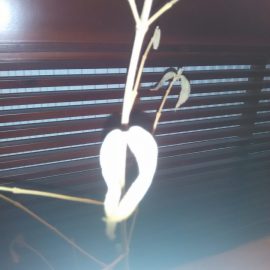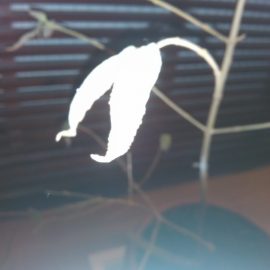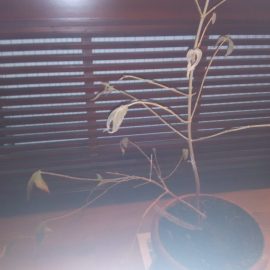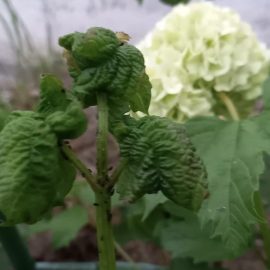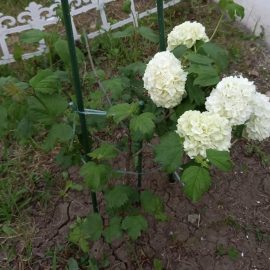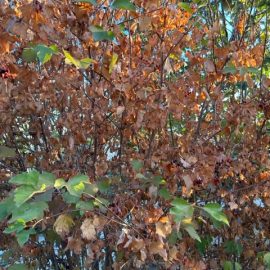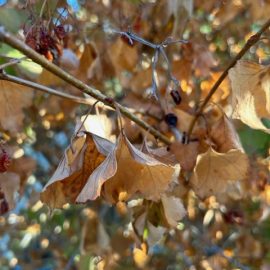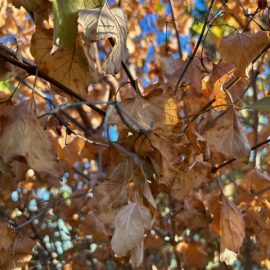Viburnum, planting guide and care work
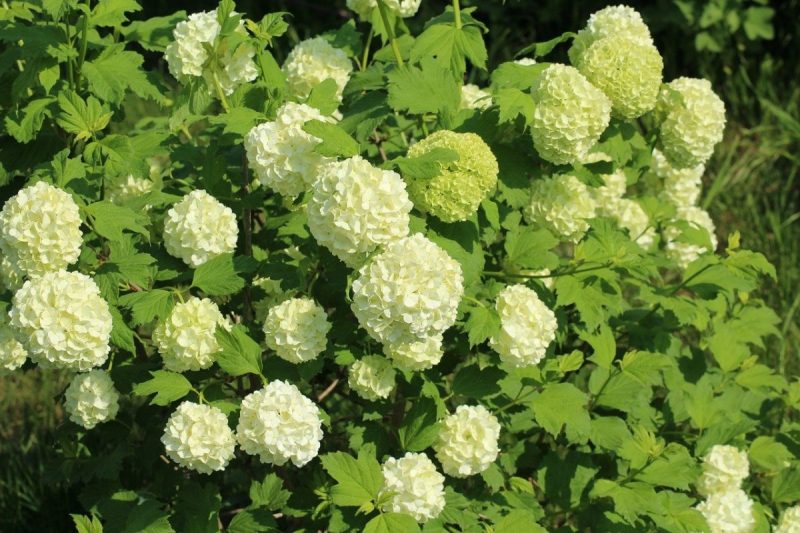
Viburnum is a genus comprising about 150-175 species of shrubs in the Adoxaceae family. They originate from the temperate zones of the northern hemisphere, with few specimens coming from the subtropical areas (Africa and South Asia).
Species in cold temperate climates have deciduous leaves, while species in warm temperate climates have persistent foliage. The leaves are oppositely arranged on the branches, they can be whole or lobed, with a simple or serrated edge. Some species have pubescent leaves and buds. The flowers grow grouped in corymbs 5-15 cm wide. They are small, made up of 5 petals, of various colors (white, cream, pink), sometimes intensely fragrant. The fruits are spherical, oval, or flattened drupes. They can be red, blue, or black and contain a single seed.
It is used for decorating parks and gardens. The bark of some species is used in herbal medicine, in the treatment of some diseases. In Russia and Ukraine, Viburnum is a shrub with cultural value.
Species and varieties
Viburnum opulus (guelder-rose) reaches up to 2-4 m in height. It has trilobate leaves and inflorescences made up of two types of flowers (small, fertile, in the center, and large, sterile, outside). It blooms in May-June. It forms round, red drupes. Cultivars:
‘Roseum’ – it has inflorescences made up only of sterile, large, white-pink flowers.
Viburnum lantana (wayfaring tree) is a species with a vigorous appearance, which reaches up to 2-5 m in height. It develops pubescent shoots. The leaves are oval in shape, rough, with a whitish underside. The inflorescences are umbel-shaped, made up of small, white flowers. The fruits are red at first, then turn black.
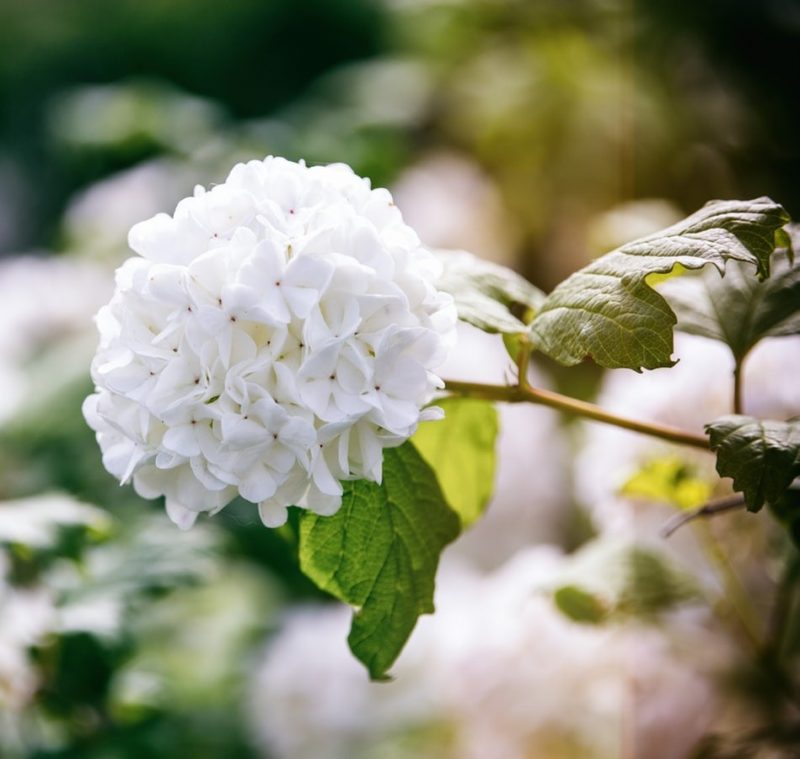
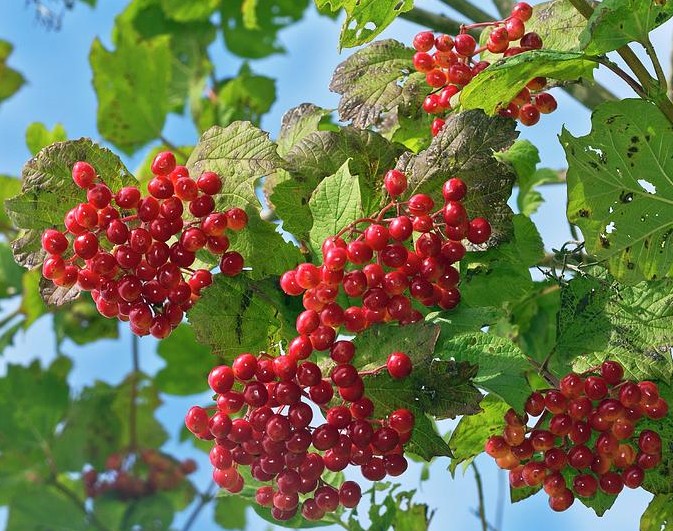
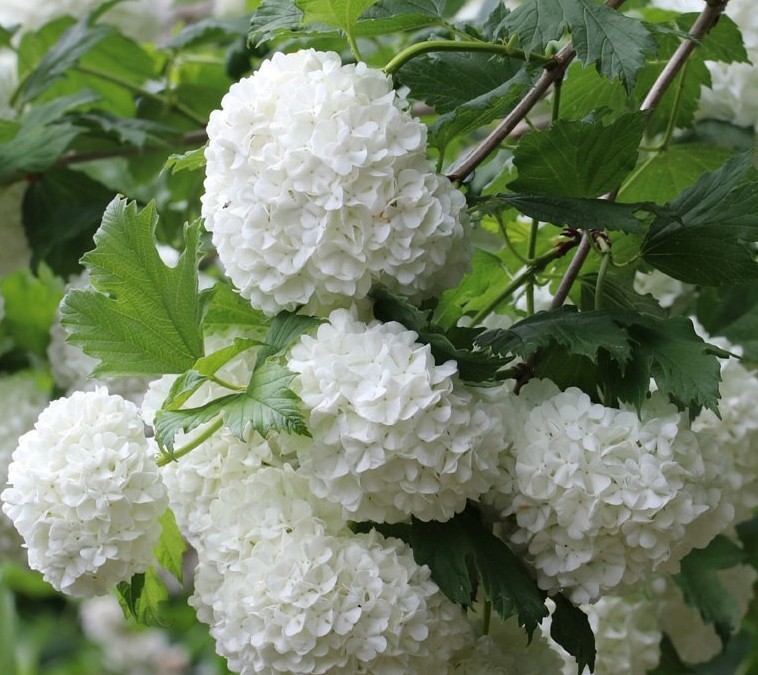
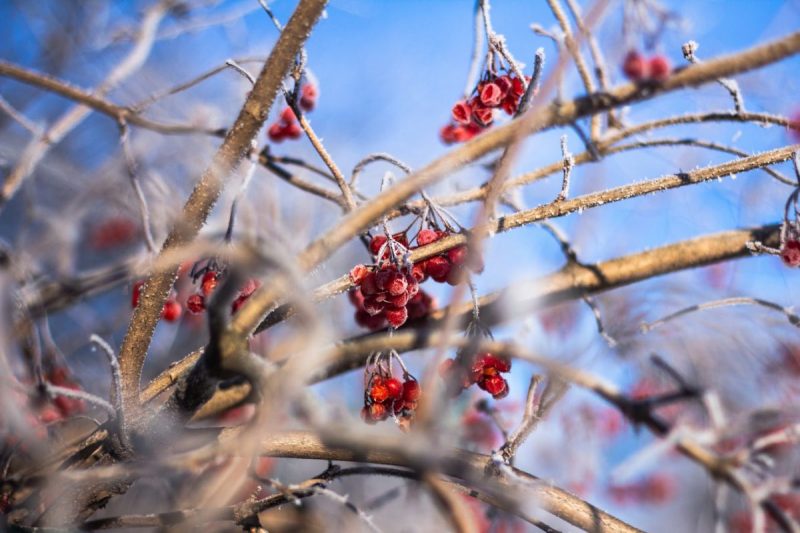
Viburnum plicatum is a species native to China and Japan. It grows up to 2-3 m in height and has a rounded crown, with horizontal branches. The leaves have an oval or elliptical shape, are dark green, with a pubescent underside. It blooms in May-June, forming white spherical inflorescences. Cultivars:
‘Rotundifolium’ – it is smaller, has wider leaves, with red veins. It forms larger inflorescences, which bloom 2 weeks earlier.
Viburnum rhytidophyllum is native to China and has evergreen foliage. It has a vigorous appearance, it reaches up to 3 m in height. It has tomentose branches. The leaves are lanceolate and pendant. They are dark green, rough, with a tomentose underside. It blooms in May-June, forming large, flattened inflorescences, made up of white-yellow flowers. In some countries, with a temperate climate, it rarely develops fruits. These are red at first, then turn black.
Viburnum carlesii is a species native to Korea, with a height of 1 m. The leaves are broad, elliptical, pubescent. It blooms in April-May. It has pink buds, which open into pale pink flowers. The fruits are black.
Viburnum x bodnantense is a hybrid species native to England, which reaches a height of 3 m. It has lanceolate, oval, and sharp leaves. It blooms in winter (October-March), developing small, pink, fragrant flower bouquets.
Environmental conditions
Light. They grow both in sunny and partially shaded places. The species V. opulus, V. lantana, V. rhytidophyllum prefer partially shaded places.
Temperature. Some species can withstand a temperate climate, but species native to East Asia are sensitive to frost and must be protected during the winter, especially V. carlesii.
Soil. They generally grow in rich soils. V. lantana can withstand calcareous soils.
Watering
They have no specific water requirements. V. opulus requires moist soils, and V. lantana is drought resistant.
Fertilization
To stimulate abundant growth and flowering, it is recommended to administer a fertilizer for decorative shrubs.
Recommended products
-
You can find products on a different store
Change Store -
You can find products on a different store
Change Store -
You can find products on a different store
Change Store -
You can find products on a different store
Change Store -
You can find products on a different store
Change Store -
You can find products on a different store
Change Store -
You can find products on a different store
Change Store -
You can find products on a different store
Change Store -
You can find products on a different store
Change Store -
You can find products on a different store
Change Store -
You can find products on a different store
Change Store -
You can find products on a different store
Change Store -
You can find products on a different store
Change Store -
You can find products on a different store
Change Store -
You can find products on a different store
Change Store -
You can find products on a different store
Change Store -
You can find products on a different store
Change Store -
You can find products on a different store
Change Store -
You can find products on a different store
Change Store -
You can find products on a different store
Change Store -
You can find products on a different store
Change Store -
You can find products on a different store
Change Store -
You can find products on a different store
Change Store -
You can find products on a different store
Change Store
Pruning
Some species can tolerate pruning.
Recommended products
-
You can find products on a different store
Change Store -
You can find products on a different store
Change Store -
You can find products on a different store
Change Store -
You can find products on a different store
Change Store -
You can find products on a different store
Change Store -
You can find products on a different store
Change Store -
You can find products on a different store
Change Store -
You can find products on a different store
Change Store -
You can find products on a different store
Change Store -
You can find products on a different store
Change Store -
You can find products on a different store
Change Store -
You can find products on a different store
Change Store -
You can find products on a different store
Change Store -
You can find products on a different store
Change Store -
You can find products on a different store
Change Store -
You can find products on a different store
Change Store -
You can find products on a different store
Change Store -
You can find products on a different store
Change Store -
You can find products on a different store
Change Store -
You can find products on a different store
Change Store -
You can find products on a different store
Change Store -
You can find products on a different store
Change Store -
You can find products on a different store
Change Store -
You can find products on a different store
Change Store
Diseases and pests
Viburnum shrubs can be infested by aphids and are susceptible to cryptogamic diseases.
Recommended products
-
You can find products on a different store
Change Store -
You can find products on a different store
Change Store -
You can find products on a different store
Change Store -
You can find products on a different store
Change Store -
You can find products on a different store
Change Store -
You can find products on a different store
Change Store -
You can find products on a different store
Change Store -
You can find products on a different store
Change Store -
You can find products on a different store
Change Store -
You can find products on a different store
Change Store -
You can find products on a different store
Change Store -
You can find products on a different store
Change Store -
You can find products on a different store
Change Store -
You can find products on a different store
Change Store -
You can find products on a different store
Change Store -
You can find products on a different store
Change Store -
You can find products on a different store
Change Store -
You can find products on a different store
Change Store -
You can find products on a different store
Change Store -
You can find products on a different store
Change Store -
You can find products on a different store
Change Store -
You can find products on a different store
Change Store -
You can find products on a different store
Change Store -
You can find products on a different store
Change Store
Planting
It can be done in spring or autumn, during the vegetative dormancy period, at temperatures above 5° C, if the soil is not frozen and there is no danger of frost. Be sure to purchase planting material from authorized nurseries. Immediately after planting, the soil must be well-trodden and watered abundantly. After that, the soil must be kept damp.
Propagation
They can be propagated through seeds, cuttings, grafting, and layering.
- the seeds have to be harvested the first-fruits phase and require a layering of 2 years. They have to be sown directly in the field, in July.
- through lignified cuttings V. Opulus is propagated; V. rhytidophyllum is propagated through semi-lignified cuttings.
- grafting must be done in spring, in the field, on the shank. This method is used for V. opulus ‘Roseum’ for trunk development.
- through layering are propagated the cultivars, in June.
Recommended products
-
You can find products on a different store
Change Store -
You can find products on a different store
Change Store -
You can find products on a different store
Change Store -
You can find products on a different store
Change Store -
You can find products on a different store
Change Store -
You can find products on a different store
Change Store -
You can find products on a different store
Change Store -
You can find products on a different store
Change Store -
You can find products on a different store
Change Store -
You can find products on a different store
Change Store -
You can find products on a different store
Change Store -
You can find products on a different store
Change Store -
You can find products on a different store
Change Store -
You can find products on a different store
Change Store -
You can find products on a different store
Change Store -
You can find products on a different store
Change Store -
You can find products on a different store
Change Store -
You can find products on a different store
Change Store -
You can find products on a different store
Change Store -
You can find products on a different store
Change Store -
You can find products on a different store
Change Store -
You can find products on a different store
Change Store -
You can find products on a different store
Change Store -
You can find products on a different store
Change Store
In addition:
- they can also be grown in pots or containers.
- in most species, the fruits are toxic.
- in the case of potted specimens, fertilization is mandatory.














































































































































































































































































































































































































































